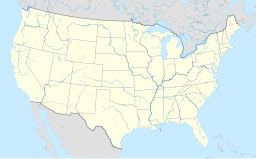Norristown, Pennsylvania
| Norristown, Pennsylvania | |
| Municipality of Norristown, Norristown Municipality | |
|
Home Rule Municipality County Seat |
|
| Country | |
|---|---|
| State | |
| County | |
| Elevation | 135 ft (41.1 m) |
| Coordinates | 40°07′12″N 75°20′30″W / 40.12000°N 75.34167°WCoordinates: 40°07′12″N 75°20′30″W / 40.12000°N 75.34167°W |
| Area | 3.5 sq mi (9.1 km2) |
| - land | 3.5 sq mi (9 km2) |
| - water | 0.0 sq mi (0 km2), 0% |
| Population | 34,324 (2010) |
| Density | 9,806.9/sq mi (3,786.5/km2) |
| Government | Council-manager |
| Timezone | EST (UTC-5) |
| - summer (DST) | EDT (UTC-4) |
| ZIP Codes | 19401, 19403-19409, 19487-19489 |
| Area code | 610 and 484 |
|
Location of Norristown in Montgomery County
|
|
|
Website: www |
|
Norristown is a borough (with home rule status) in and the county seat of Montgomery County, Pennsylvania, United States. Located along the Schuylkill River approximately six miles from the Philadelphia city limits, Norristown has a population of 34,324 as of the 2010 U.S. Census and is the 4th most populous municipality in the county.
The area where Norristown sits was originally owned by the family of Isaac Norris, who purchased the land from William Penn in 1704.
Named the county seat in 1784 when Montgomery County was formed, Norristown was incorporated as a borough in 1812 and subsequently enlarged in 1853. About 500 people lived there at the time of its incorporation. Growing rapidly after the Civil War, it swelled to 22,265 people by 1900 and by 1940 it was home to 38,181 Norristonians, making it the most populous borough in Pennsylvania before declining in the decades after World War II.
At its height, Norristown was an industrial, retail, banking, and government center. Breweries, cigar factories, textile mills, icehouses, foundries, rolling mills, and lumber yards provided ample employment for skilled laborers and artisans. The downtown featured two department stores, several theaters, and enough goods and services that residents never had to leave town to find anything they needed. Although primarily settled by the English and a handful of Germans, Scots, Dutch, and Swedes, in the mid-1800s the Irish began arriving in large numbers, followed by waves of Italians at the turn of the century.
With the opening of new malls in nearby King of Prussia and Plymouth Meeting, the downtown declined in the decades after World War II. Industry soon followed, as many companies closed or relocated into new industrial parks throughout Montgomery County. Efforts to revitalize and reshape itself as a 21st-century community have produced minimal results.
...
Wikipedia




